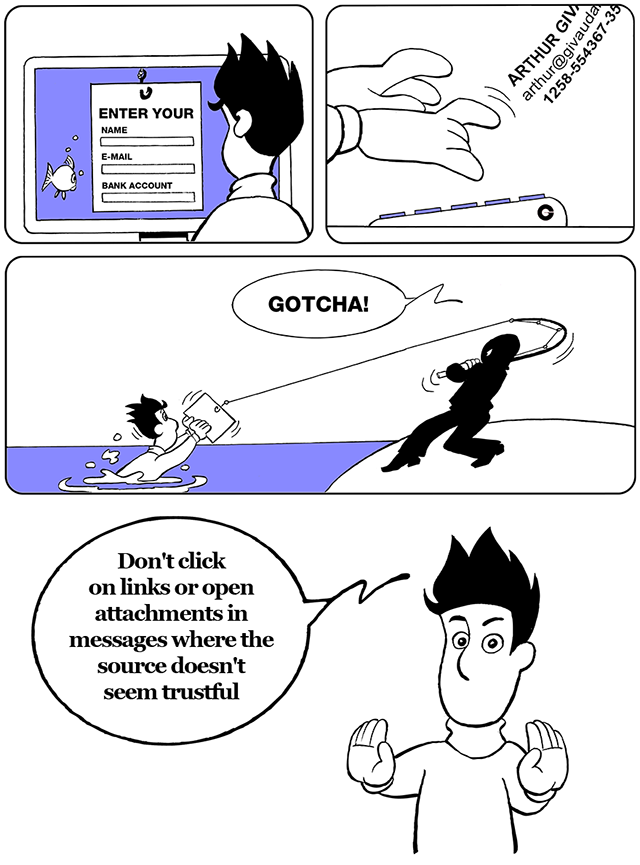
Tip 5: Don’t click on links or open attachments in messages where the source doesn’t seem trustful
عربى | Bahasa Indonesia | 简体中文 | Nederlands | Français | Deutsch | English |
हिंदी | Magyar | 日本語 | Bahasa Melayu | Português | русский | Español

The risks
|
|
Links or attachments in e-mails can be infected with malware. Such malware can infect your device and destroy all data. |
|
|
It can also spy on you and steal confidential data or money (i.e. e-banking account). |
|
|
Or it steals personal or business passwords and impersonate your accounts to send spam e-mails or to infect colleagues and friends with malware. |
Useful tips
|
|
Always be careful when an e-mail has an attachment or a link embedded: Even if the sender seems familiar, always double check before clicking on the attachment or the link. Faking a friend's identity is a powerful method hackers use to inject viruses on your devices. |
|
|
Download files only from trusted sources. It is common that hackers trick you in visiting fake websites which look as the legitimate website to steal your sensitive information (i.e faking your bank website). |
|
|
|
|
|
Always keep your own devices up to date and make sure you perform regular backups to reduce the chance of losing information if a malware infects your device. |
Scary statistics

95% of all attacks on enterprise networks are the result of successful spear phishing.

The average cost of a phishing attack for mid-size companies is USD 1.6 million. 76% of businesses reported being a victim of a phishing attack in 2017.

30% of phishing messages get opened by targeted users and 12% of those users click on the malicious attachment or link.